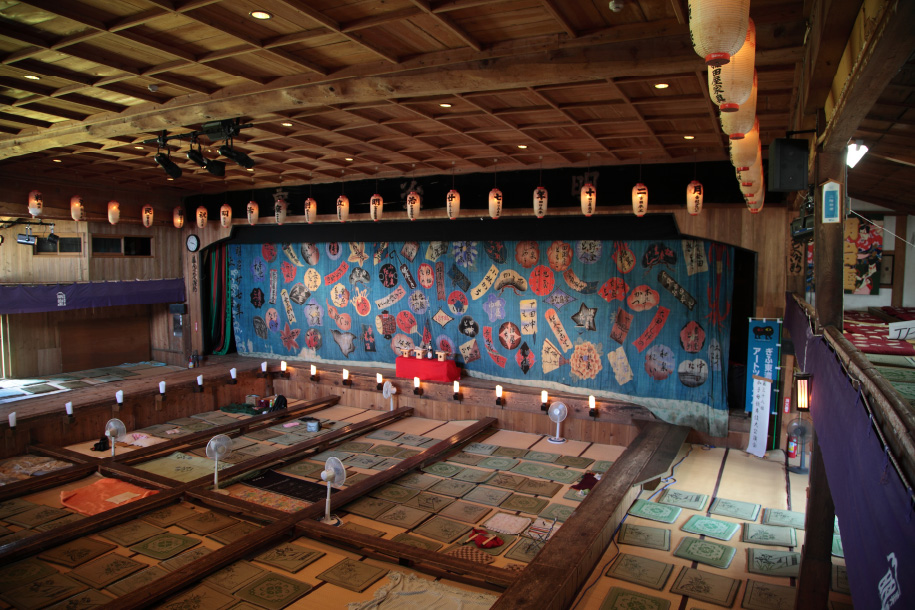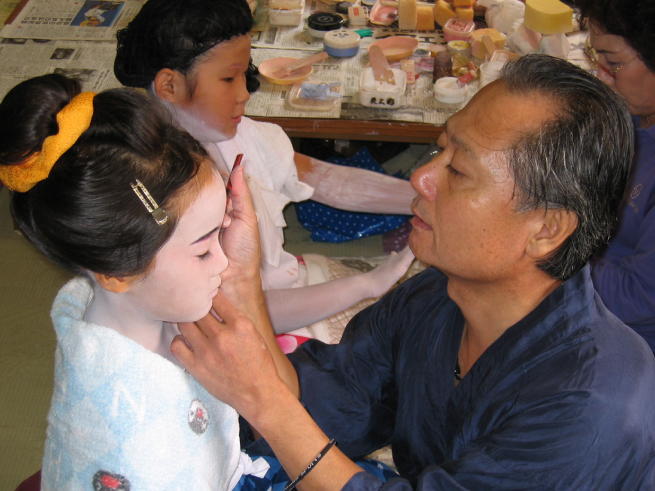Although the start of World War II forced a suspension of Ji-shibai, it underwent a revival in various locations after the war ended. From 1955 onwards, however, a boom in movies and the appearance of television during the period of high economic growth expanded the range of entertainment available, and Ji-shibai saw a rapid decline.
Afterwards, at some point around 1965, communities—mainly in the Tono region—started to establish preservation groups with the aim of passing down Ji-shibai to future generations. Currently, 45 council member preservation groups continue to be active in the prefecture.
A play is not merely what you see onstage. In addition to the actors, these performances are only possible with the support of stage directors, Gidayu chanters, shamisen players, makeup artists, dressers, costume directors, and other important individuals. Preservation groups are supported by the passion of those who want to save and continue the traditional performing art of Ji-shibai for the future.
However, many preservation groups face multiple challenges such as a lack of successors due to their aging membership, depopulation, and funding issues.
Postwar Revival and Decline of Ji-shibai



